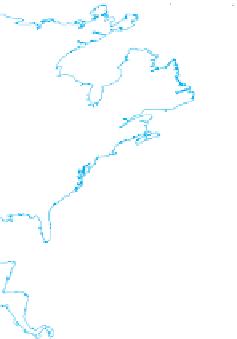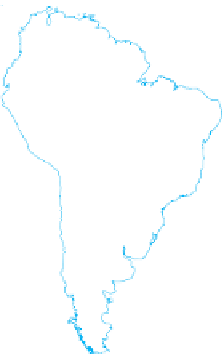Geography Reference
In-Depth Information
C A P I TA L F L O W I N T O E U R O P E , 1 7 7 5
Exports to Britain
Exports to Spain
Liverpool
London
Glas
g
ow
Amsterdam
Exports to
United Provinces
Exports to Portu
g
al
Bristol
Nantes
La Rochelle
Exports to France
Bordeaux
Lisbon
Cádiz
£4.9
0
2000
4000 Kilometers
0
1000
2000 Miles
Figure 12.2
Capital Flows into Europe during the Period of European Colonialism.
This map shows the major fl ows of
capital into Europe from Europe's colonies. The capital helped fuel Europe's Industrial Revolution at the end of the
1700s and into the 1800s.
Adapted with permission from:
Geoffrey Barraclough, ed.
The Times Concise Atlas of World
History,
5th edition, Hammond Incorporated, 1998.
town's bridge, the fi rst in the world to be constructed
entirely from cast iron in 1779 (Fig. 12.3).
The steam engine, with its multitude of uses, also
had a dramatic impact on industry. It was used to pump
water out of coal mines, enabling coal workers to reach
deeper coal seams, to power spinning wheels that spun
100 plus spools of thread at a time, to power dozens of
looms in a factory all at once, and to create a new mode
of transportation: the railroad. In 1830, Manchester, a
center of textile manufacturing, was connected by rail to
the nearby port of Liverpool, a westward-facing port
that linked Britain with the colonies. In the next several
decades, thousands of miles of iron and then steel track
were laid. Ocean shipping also entered a new age when
the fi rst steam-powered vessel crossed the Atlantic
in 1819.
With the advent of the railroad and steam ship,
Great Britain enjoyed even greater advantages over the
rest of the world than it did at the beginning of the
Industrial Revolution. Not only did the British hold a
near-monopoly over the production of many products
that were in demand around the world, but it alone
possessed the skills necessary to make the machines that
manufactured them. Continental Europe and America
wanted railroads and locomotives, and England had the
know-how, the experience, and the capital to supply
them. Soon, British infl uence around the world was
reaching its peak.
Meanwhile, the spatial pattern of modern Europe's
industrial development began to take shape. In the early
part of the Industrial Revolution, before the railroad
connected nodes of industry and reduced the transpor-
tation costs of coal, manufacturing needed to be located
close to coalfi elds. Manufacturing plants also needed to
be connected to ports, where raw materials could arrive
and fi nished products could depart. In the fi rst decades
of the Industrial Revolution, plants were usually con-
nected to ports by a broad canal or river system. In
Britain, densely populated and heavily urbanized indus-
trial regions developed near the coal fi elds (Fig. 12.4).
The largest such region was the Midlands of north-
central England.












































































































































































































































































































































































































































































































































































































































































































































































































































































































































































































































































































































































































































































































































































































































